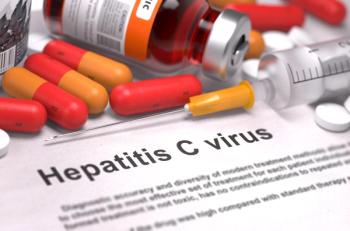
Potential Associations Found Between Microbiome, Early Cognitive Development in Infants
Key study finding shows associations between the beat frequency in the rhythmic stimulus in the frontal left sites of infant brains and pathways related to brain modulation and nucleotide levels.
A recent study identified some associations between the gut microbiome and brain function in early infancy; however, further research is needed to determine the full scope of the interactions between the systems, according to the analysis published in Public Library of Science One.
There is growing evidence demonstrating the connection between the microbiota gut-brain axis and neurodevelopment. It was previously hypothesized that the early microbiome interactions along the gut-brain axis have evolved to promote advanced cognitive functions and behaviors.
To test this, investigators performed a pilot study to determine whether the microbiota composition of infants is associated with measures of early cognitive development, with a focus on microbial diversity and functional potential of the gut microbiome.
Fecal samples from 56 infants between 4 and 6 months of age were collected between 2 universities from February 2019 to February 2020. Brain imaging was used to quantify early brain development; from the 56, 40 samples were included in the trial.
Functional near-infrared spectroscopy (fNIRS) was used to measure the cortical hemodynamic response of infants while being exposed to forward and backwards speech. Electroencephalography (EEG) was used to measure the electrical activity of infant brains during presentation of a rhythmic stimulus.
Infants were given the point and gaze test to gauge their understanding of non-verbal joint attention communication. Alpha diversity indexes were measured and compared between the participants based on their success on the test. There were no statistical differences observed in the Shannon index between the comparisons, but samples collected from the University of British Columbia (UBC) were less rich than those collected from McMaster University (p = 0.032).
Next, investigators compared the relative abundance of multiple taxa between children with successful or unsuccessful results in the point and gaze test. Investigators observed that, at the phylum level, children who were successful on at least 1 subtest of the point and gaze task had a higher relative abundance of Actinobacteria and lower abundance of Firmicutes compared to infants who failed both subsets. No differences were observed in the Bacteroidetes and Proteobacteria phylum, but after adjustments, none of the observed findings were statistically significant.
At the phylum level, similar microbial distributions were observed between the 2 collection sites for the 4 analyzed phyla in infants with successful results on at least 1 of the point and gaze subtests. However, for infants who failed both subtests, differences were observed between the sites. Additionally, there were some interactions between variables. Hungatella and Strepococcus was common only in UBC infants who failed on both point and gaze subtests, whereas Bacteroides and Veillonella in the McMaster participants who failed on both point and gaze subtests had a different distribution compared to the other groups.
Next, researchers analyzed the associations between the microbiome and brain imaging measurements for rhythm and language processing. Associations were only observed between bacteria genera and EEG measurements. Additionally, of the 11 EEG variables studied, only the SSEP amplitudes at the beat frequency in the rhythmic stimulus in the frontal left sites (BEAT_FL) had a statistically significant association.
BEAT_FL was positively associated with Clostridium and Enterococcus, and a negative association with Bifidobacterium. Researchers then performed multivariable association analysis, which found that BEAT_FL had 57 positively associated pathways and 17 negatively associated pathways, all from the biosynthesis super class.
The researchers discussed that the identified associations between the microbiome and infant brain development must be interpreted with caution due to the low sample size of their trial and unmeasured variables.
“Nevertheless, many interesting associations were identified between the microbiome and brain function in early infancy, indicating that replication and further research could be fruitful for understanding the role of the microbiome in early cognitive development,” the investigators concluded.
Reference
Hunter S, Flaten E, Petersen C, et al. Babies, bugs and brains: how the early microbiome associates with infant brain and behavior development. PLoS ONE. 2023;18(8):e0288689. doi:10.1371/journal.pone.0288689
Newsletter
Stay informed on drug updates, treatment guidelines, and pharmacy practice trends—subscribe to Pharmacy Times for weekly clinical insights.




















































































































































































































